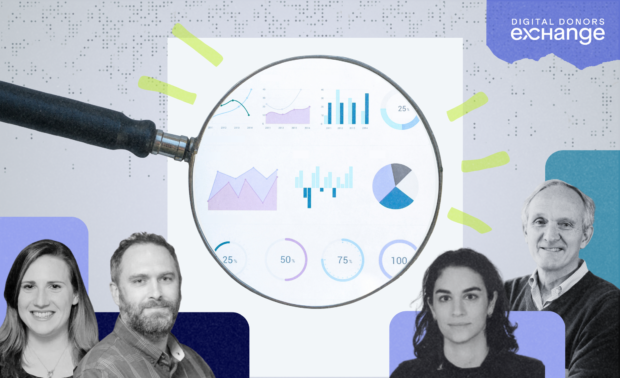As the digital public infrastructure (DPI) movement drives forward, the digital economy is growing ever more vibrant. DPI is unlocking unprecedented access to essential services and paving the way for entrepreneurs and communities to seize new economic opportunities.
But there is a fundamental piece of foundational infrastructure often taken for granted and overlooked when it comes to discussions of DPI: connection to the internet.
If we do not address the challenge of connectivity, public goods and services that are provided digitally will be a new way of creating further exclusion. And with 2.6 billion people still disconnected from the internet, we have a long way to go.
To explore how the DPI and Connectivity movements can work more closely together, we invited Sonia Jorge, Founder and Executive Director, Global Digital Inclusion Partnership, and Ibrahima Guimba-Saidou, Interim CEO, Partnership for Digital Access in Africa, to speak to our Digital Donors Exchange. The discussion centered on strategies to achieve meaningful connectivity, coordinating top-down and bottom-up efforts, and building solutions rooted in community needs.
Internet access alone is not enough. Meaningful connectivity is the gold standard for positive impact.
To be connected in a way that is meaningful expands beyond just having access to the internet; it encompasses factors such as the quality, speed, reliability, and affordability of the connection, and what type of device is granting access. Is it a personal smart phone? Or a public computer in an internet café? Additionally, meaningful connectivity should include a supportive social environment with education around digital skills, relevant local online content, and overall respect for human rights.
Only with these pillars in place can communities fully benefit from the range of opportunities and possibilities that digital connectivity can provide.
Despite overall internet access trending upward, gaps in meaningful connectivity remain vast, especially among rural populations and for women. For example, 40% of the African population uses the internet – compared to just 23% in rural areas (GDIP). Closing these gaps will require multi-faceted efforts spanning infrastructure, skills, content, affordability, and more.
Key take-aways from the discussion
1) Coordinating connectivity with service delivery and skilling in an integrated way can maximize impact. Meaningful connectivity is only meaningful if it helps a community improve their living conditions. This can be achieved through digital services. Ibrahima walked the group through one flagship example from his time working with the government of Niger. Working together with development partners, multilateral banks and the local ecosystem, the government of Niger designed a strategic approach to national digital transformation: the Smart Village program. From the start, the program would pair digital community centers with services like trainings and coding academies; and connected devices with healthcare services and education programs. more directly to people. These strategies increased not only uptake – but also the quality of the services. For example, the project saw higher connectivity usage by women (around 75%) as they saw tangible benefits like better healthcare through digital tools. By bundling connectivity to new services and opportunities, the Smart Village program maximized impact for previously unconnected communities. Bundled together in such a way, investments of often scarce resources can be more than the sum of their parts.
2) Local relevance and involvement in solutions is critical for driving adoption and use. The Smart Village program in Niger is an exceptional example of a community-led, collaborative approach. One key to their success: engaging the youth. The program recruited young people to manage digital centers and develop locally-relevant content that the internet could provide access to. This allowed this key to see first-hand the benefits of digital services. In a place where two thirds of the population is under 40, ensuring this cohort sees the value in connectivity and digital services is key to uptake. Further – if we think about meaningful connectivity in a simpler sense, we can define it as having what you need for what you want to do. To understand what products and services people need and expect, they must be included in the design and implementation. By designing with people, services and solutions are all but guaranteed to be more tightly connected to their everyday needs. Additionally, community-based solutions tend to benefit marginalized populations at a higher rate. For this reason, this approach can be a key strategy to closing digital divides across gender or other demographics.
3) Achieving real, lasting change takes time. Deploying solutions through pilots and getting early results can help make the case for additional resources over time. So, it can be tempting to pursue quick results. But truly empowering and upskilling people takes time. To overcome the challenges to achieving meaningful connectivity, it is essential to prioritize long-term commitment over quick results. A whole-of-society approach, with coordinated efforts from across the entire local ecosystem is one framework that can be used to achieve this. Additionally, Sharing, using, and reusing infrastructure can ensure the sustainability of connectivity projects and digital services by being resource-efficient and accelerating impact.
There are opportunity costs to inaction.
In our digital world, exclusion from the internet also means exclusion from increasingly essential digital services and opportunities. And this negatively impacts society-at-large. GDIP estimates that the world lost over $1 trillion due to the gender divide that persistently keeps women offline. GDIP also estimates that middle-income countries could lose $500 billion in the next 5 years if nothing is done to address connectivity and specifically the gender divide.
While there is a long road ahead of us to achieve universal meaningful connectivity, the consensus among the DDX group of participants was that momentum is building, with the right actors coming together to coordinate efforts. But we must not lose the sense of urgency, we must continue to pursue collaborative approaches and tackle the issues that are blocking progress.



